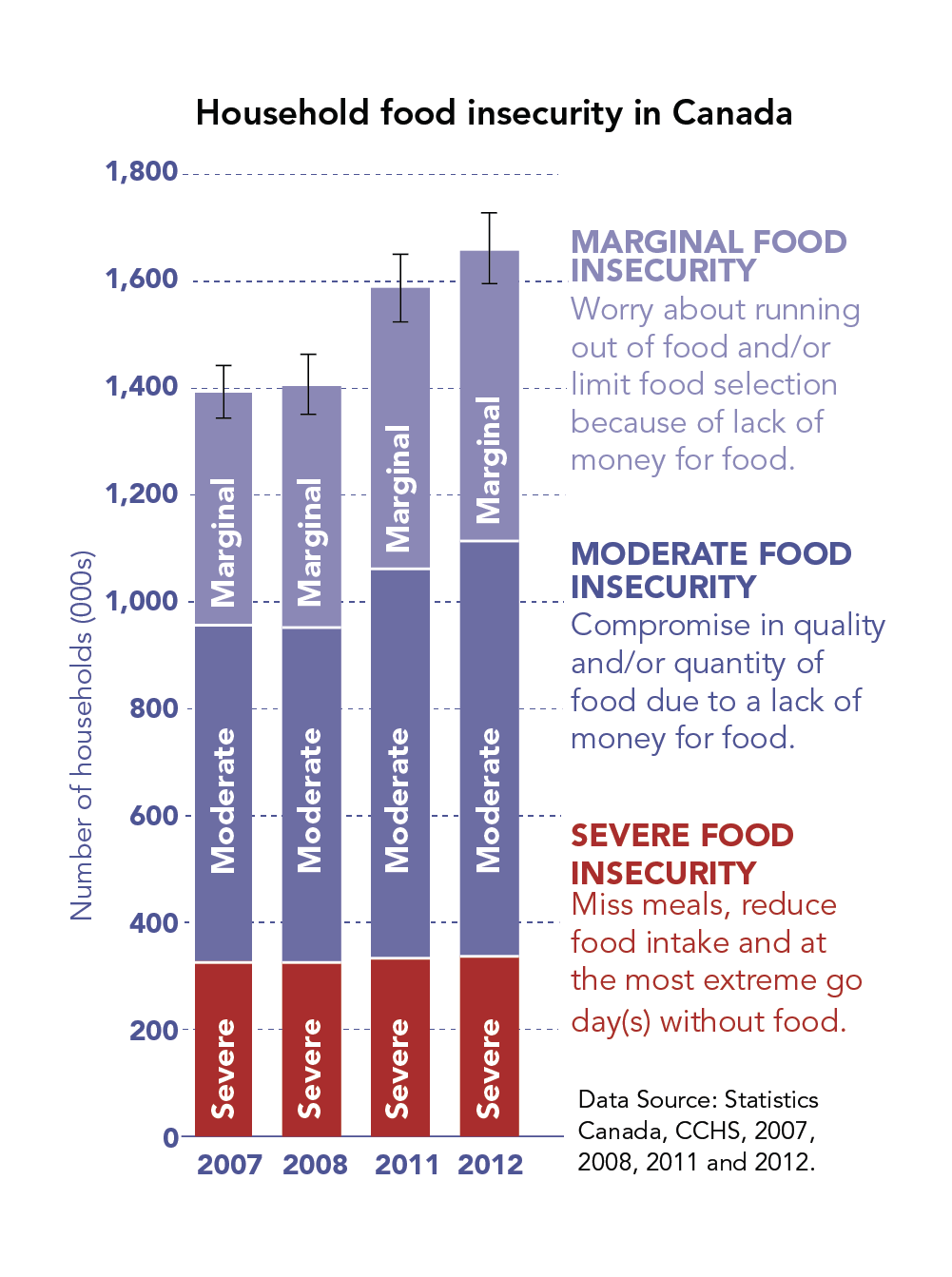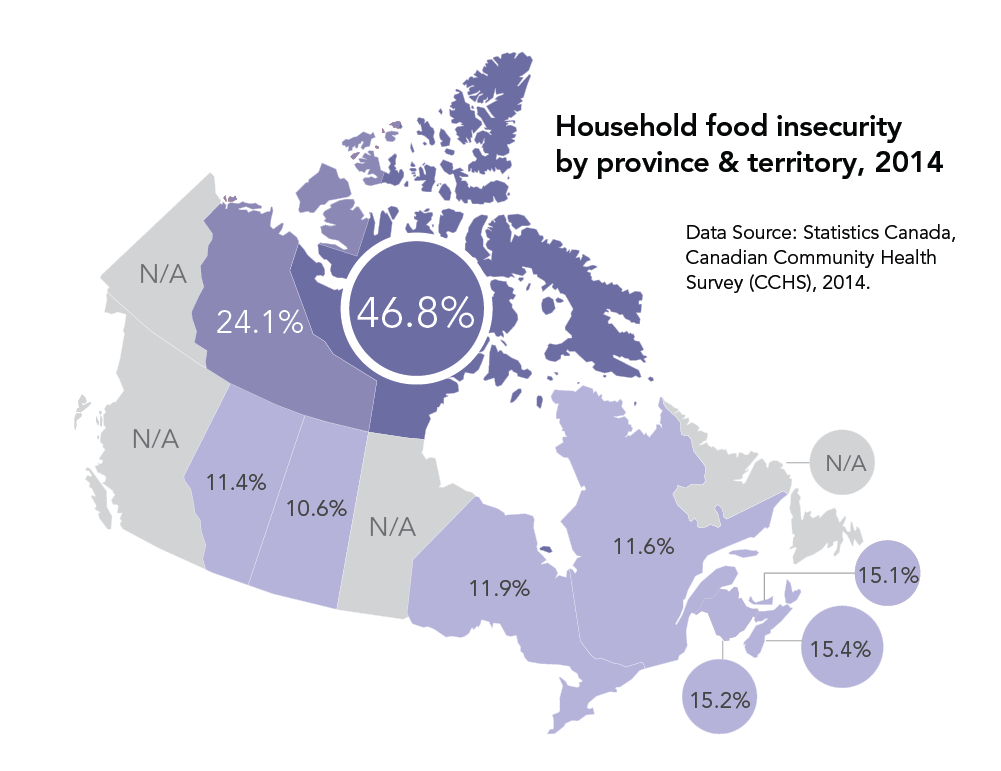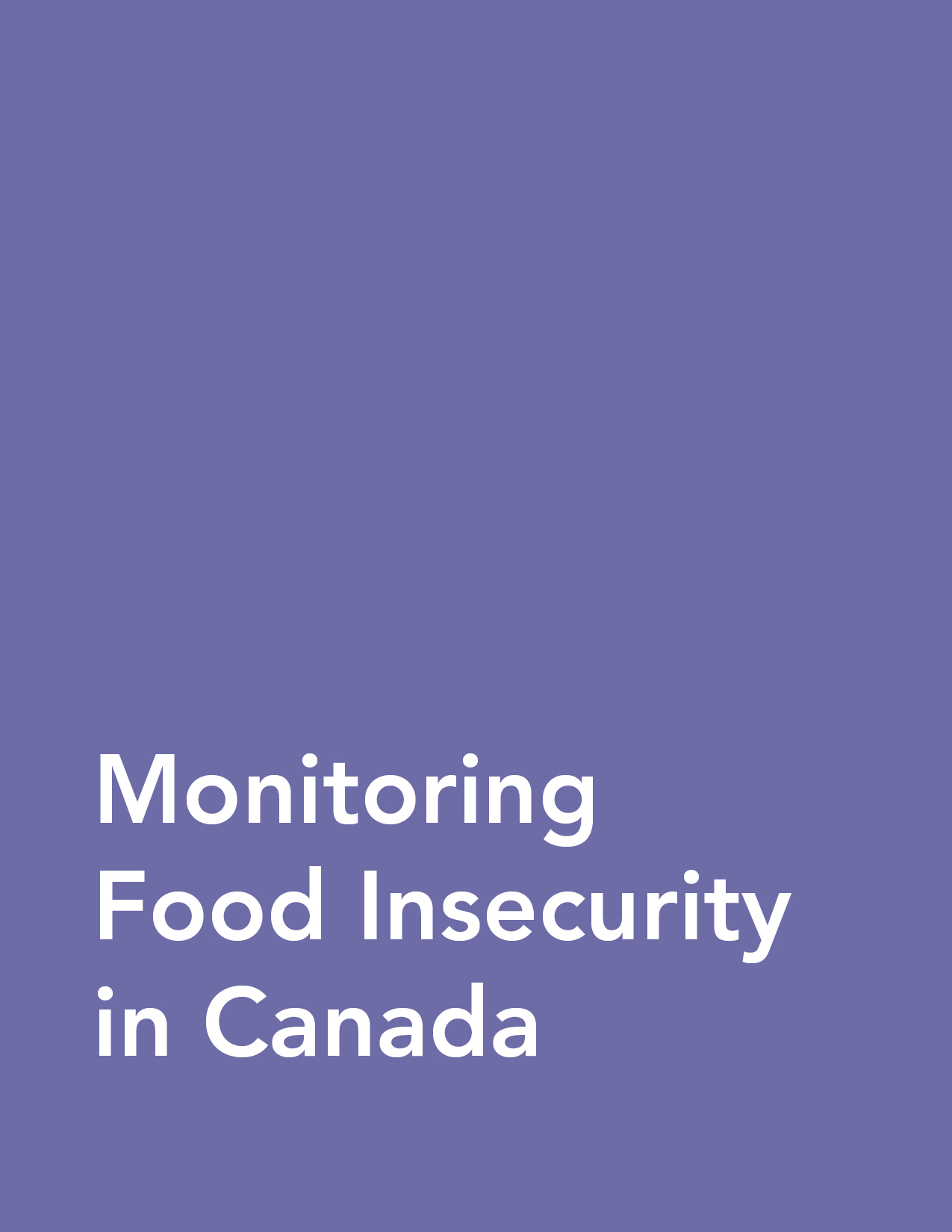Monitoring Food Insecurity in Canada
June 27, 2016
This factsheet is based on data from previous Statistics Canada Surveys and has not been updated or maintained. It is provided here for archival purposes. Updated data can be found in the latest status report on household food insecurity in Canada.
Food insecurity – the inadequate or insecure access to food due to financial constraints – is a serious public health problem in Canada. It negatively impacts physical, mental, and social health, and costs our healthcare system considerably.
Statistics Canada began monitoring food insecurity in 2005 through the Canadian Community Health Survey (CCHS). Since then, food insecurity has persisted across Canada, with over 4 million Canadians living in food insecure households.
Data on food insecurity are collected through the Canadian Community Health Survey (CCHS), a cross sectional survey administered by Statistics Canada that collects health-related information from about 60,000 domiciled Canadians per year.
However, the CCHS excludes individuals living on First Nations reserves or Crown Lands, full time members of the Canadian Forces, persons in prisons or care facilities, and the homeless.
Household Food Security Survey Module (HFSSM) on the CCHS consists of 18 questions regarding the presence of food insecure situations in the household over the last 12 months. These situations range from worrying about running out of food to going for whole days without eating, due to inadequate finances.
Depending on the number of positive responses, households are classified as food secure or marginally, moderately, or severely food insecure.

Although the CCHS is conducted every year, some provinces and territories opt out of monitoring food insecurity on the survey cycles (2 years) when the food security survey module is not mandatory.
National estimates are available for the 2007-2008 and 2011-2012 cycles. They will not be available again until the 2017-2018 cycle because Ontario, Newfoundland and Labrador, and Yukon opted out in 2015 and 2016.
In 2013 and 2014, Yukon, British Columbia, Manitoba, and Newfoundland and Labrador, chose not to monitor food insecurity. As a result, there are no national estimates for those years.
Among the provinces and territories surveyed in 2014, there were no significant drops in food insecurity prevalence, and even indications of an upward trend in the already vulnerable North.

The inclusion of the HFSSM on the CCHS enables monitoring of food insecurity. As a serious public health problem, it is crucial that provinces and territories participate in all cycles of measurement.

